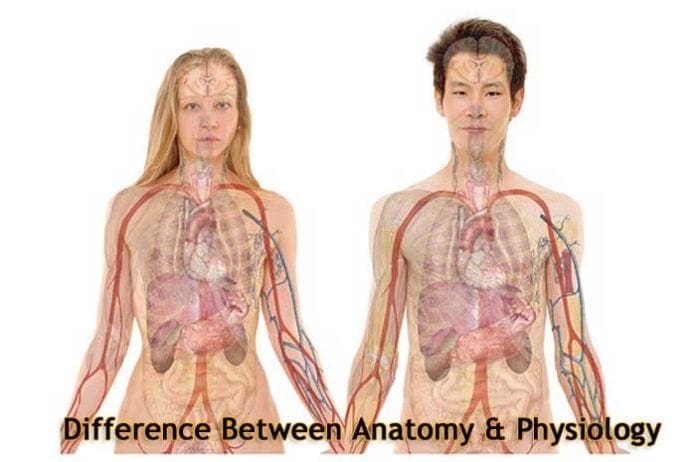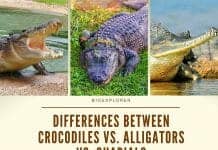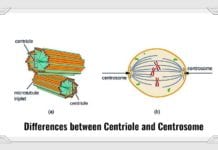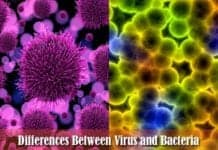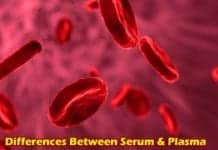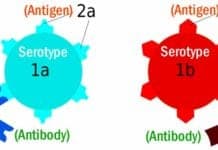Difference Between Anatomy and Physiology Overview (From Technical & Academic View) D o you tend to be fascinated by looking at the structures and forms of living things? Or perhaps, are you interested in how their body works? Generally, the knowledge of how various processes occur in living organisms and the study of the structures that carry them out is not only interesting on its own but also serves as a fundamental ground for other scientific and health-related careers.
Such topics are generally covered in the two fields of biology: anatomy physiology
The field of anatomy and physiology, which can be traced from their Greek origins
Here is the difference between anatomy and physiology from technical and career/course perspectives.
What is Anatomy? Coming from the Greek words “ana ” which means “up ,” and “tome ” which means a “cutting ” or “laceration ,” anatomy is the branch of biology
Interestingly, the words “dissection ” and “anatomy ” mean the same thing in both Greek and Latin. While they originated mainly from cutting and observing one’s body parts, anatomy has become a separate discipline. In contrast, dissection merely became a technique performed while studying anatomy.
What are the sub-types of Anatomy? The science of anatomy can be divided into two branches: (1) Gross Anatomy and (2) Microscopic Anatomy.
Gross Anatomy By definition gross anatomy is the study of biological structures at the macroscopic level (can be seen and observed by the naked eye).
Also called macro-anatomy or topographical anatomy, gross anatomy is studied to obtain information about the organism’s body parts (i.e., organs and organ systems).
In studying gross anatomy, invasive, (body is invaded or cut open) and non-invasive (body is not invaded or cut open) techniques can be performed.
Another common technique used in studying gross anatomy is the dissection of the organism.
Microscopic Anatomy Microscopic anatomy[1] is the study of the structures of organisms that are too minute to be seen by the naked eye.
Such biological structures can only be observed by staining thin sections of tissues and examining them under a microscope (light or electron microscope).
Because of specific dyes that add or enhance the specimen’s color, cells and tissues become easily distinguishable and differentiable.
What is Physiology? The word physiology comes from the Greek words “physis ” which means “origin ” or “nature of ” and “logos ” which means “study of “. Physiology is a branch of biology that deals with living organisms’ bodily processes and mechanisms. Physiology has a very wide scope as it studies the molecular
What are the sub-types of Physiology? Animal Physiology This sub-type of physiology[2] deals with how animals work, and how the physical and biochemical functions and processes occur within them. These processes include blood circulation, digestion
Plant Physiology As its name suggests, plant physiology cellular respiration equation
Microscopic Physiology Microscopic physiology is a sub-type of physiology that deals with the physiological systems of organisms that are too small to be seen by the naked eye. Such organisms include bacteria, viruses fungi
Developmental Physiology By definition developmental physiology tracks how physiological functions occur across an organism’s life span. Aside from that, it also studies both the hereditary and environmental factors that affect an organism’s environment.
Comparative Physiology Comparative physiology is used to compare and differentiate the physiology of various organisms. Along with developmental physiology, the findings in comparative physiology are used as proof for evolution taxonomic relationships
Practical Physiology This sub-type of physiology studies various ways to make the study of physiology become practical. As such, this field is incorporated into nursing and medical courses that produce different types of doctors
Difference Between Anatomy and Physiology Course/Career Wise Before anything else, it is important to know that a Bachelor’s degree in anatomy and physiology is uncommon. Usually, anatomy and physiology subjects are covered at the undergraduate level. A degree in biology or other related fields like nursing, and medical technology, offer these fields under their degree program.
However, if one wishes to enhance their specialization in the field, he may pursue a master’s or a doctorate after finishing an undergraduate degree. The table below sums up everything you need to know about the course-wise aspects of both fields.
Details Anatomy Physiology Field of Study Study the structure of living organisms. Study the bodily functions and processes that occur in living organisms. Subjects Covered Microscopy, Cell Biology Gross Anatomy, Histology, Biochemistry Prerequisites and Other Requirements Master’s Degree Bachelor’s degree in a related science field; Thesis .Dissertation . Master’s Degree Bachelor’s degree in a related science field; Thesis .Dissertation . Time to Complete Master’s Degree two years (if full-time).
Doctorate Degree about five years (if full-time).
Master’s Degree two years (if full-time)
Doctorate Degree about five years (if full-time)
Career Options Anatomist Researcher Teacher/Instructor Nursing Career in forensics May pursue medicine Other career in healthcare and sciences* Physiologist Researcher Teacher/Instructor A career in physical therapy A profession in the pharmaceutical industry May pursue medicine Other career in healthcare and sciences* How Much Do Graduates Earn? $65,110 per year ** $52,310 to $83,510 per year ***
* SOURCE: U.S. Bureau of Labor Statistics** Average income of anatomists in the year 2016*** Average income of physiologists in the year 2016
Amidst the said differences, anatomy and physiology are dependent upon one another. While each has its focus areas, anatomy, and physiology make a good pair of the related branch of knowledge. For instance, their scopes both involve the body. Therefore, anatomy must be a prerequisite before studying physiology.
Overall, anatomy and physiology, which study living organisms’ structures and bodily processes (respectively), are fascinating disciplines that will help one understand life better. Now, upon knowing each side of the coin, should you go for a career in anatomy? Or indulge yourself in physiology?
Cite This Page
[1] – “What Is Histology? ” IvyRose Holistic Health and Well-being. Accessed December 11, 2016. Link . [2] – “Animal Physiology Research. ” Animal Physiology – Research – Biological Sciences – University of Canterbury – New Zealand. Accessed December 11, 2016. Link .
